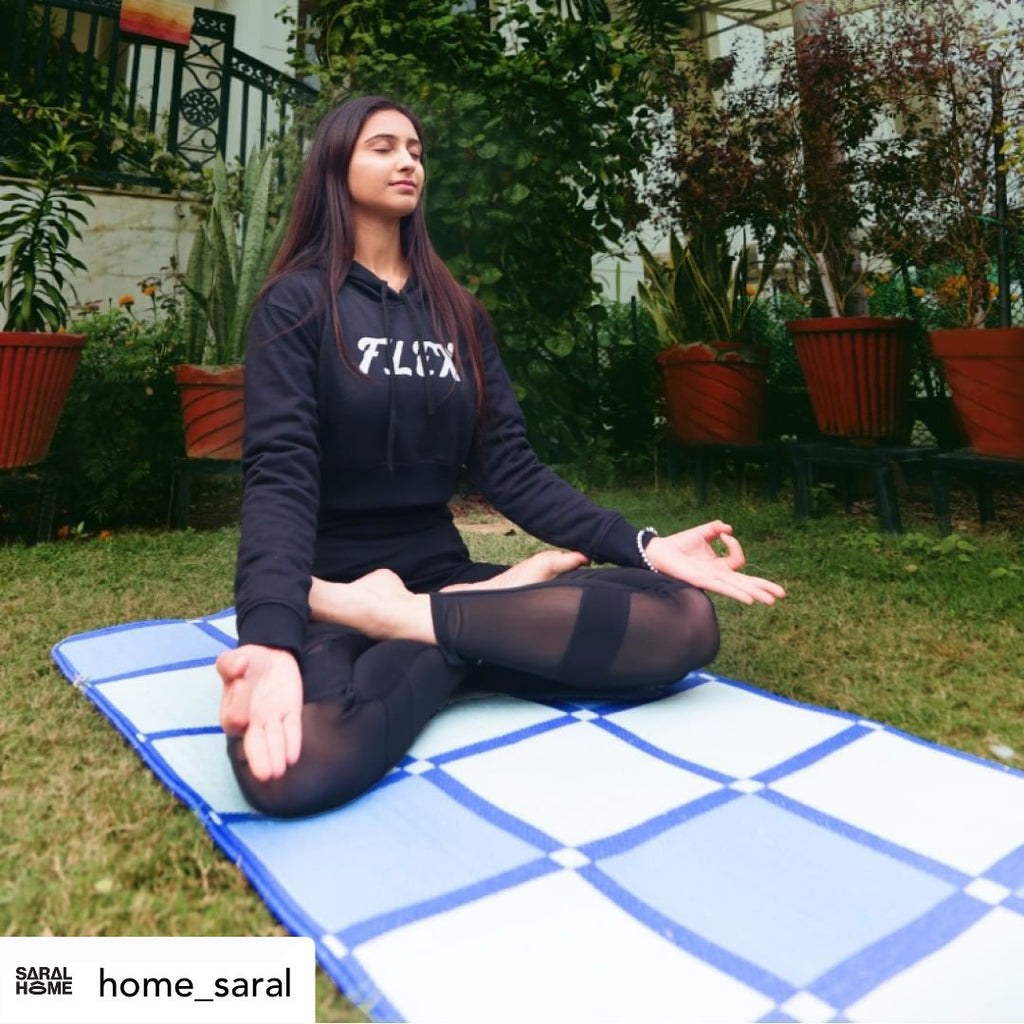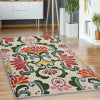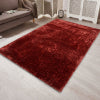5 Reasons Why You Need a Yoga Mat
Posted by AMIT KUMAR

Imagine a situation where you have your first yoga class on a Friday evening after a long week of work. You arrived straight from the office feeling excited to try this activity finally. As you entered the packed studio, the teacher informed you they had run out of rental mats.
So now you are without a mat. The class went bad for you! Lying flat on the hardwood floor, your elbows, hips, and knees throbbed. Your hands and feet kept slipping during standing poses. This made you feel off-balance. You were sore, bruised, and frustrated by the end of class. You understood that it's impossible to relax or get into the flow without a mat.
This imaginary situation explains why it is important to have a personal yoga mat. It improves your posture. A good quality mat improves joint protection, traction, and alignment. It enhances your comfort and stability while practicing Yoga. This allows you to move deeper into poses, both physically and mentally. Don’t make the mistake of trying yoga without having a personal yoga mat!
Reason 1 - Cushioning and Support
Yoga requires getting close to the floor. You must spend time lying, sitting, and balancing on a hard surface. The knees, hips, elbows, and wrists absorb most of the impact. Without proper cushioning, Yoga can cause problems in your joints over time. This is especially true during kneeling or plank poses. A yoga mat creates a protective barrier between your joints and the floor.
The padding of a yoga mat cushions your body as you move through poses. Good yoga mats have the right amount of give. They support joints but are still firm. This firmness gives a stable base. The cushioning helps absorb shock. It reduces stress on the knees, hips, and spine as you move between poses. Proper joint support prevents injury and discomfort, allowing you to hold poses longer.
Reason 2 - Hygiene
One of the main benefits of a yoga mat is providing a clean, hygienic surface for your practice. Without a mat, you run the risk of direct contact between your body and the floor. Even if your floors look clean, they harbor many germs and bacteria, invisible to the human eye. You wouldn't want those on your skin. A yoga mat acts as a protective barrier between you and the floor.
Yoga mats can also be easily cleaned and disinfected between uses. Mats made from PVC or natural rubber can be wiped down with a yoga mat spray, removing germs, sweat, and dirt buildup. Clean yoga mats stop the spread of fungi, viruses, and skin infections. These can happen from reusing a dirty mat. Home yoga practitioners can machine wash cloth mats regularly.
Studios need to clean rental mats properly to avoid spreading illness between students. In contrast, carpets and bare floors are nearly impossible to disinfect fully. A yoga mat gives you a fresh surface each time you unroll it.
Reason 3 – Traction
The unique texture of a yoga mat provides important traction to help you feel steady in poses. Many standing balances, like Tree Pose and Warrior III, require finding your center of gravity. You must find it over one foot. Without the grip of a yoga mat, feet are likely to slide out on slippery hard floors.
The mat is slightly coarse and grippy. It mimics the traction of a bare foot on a rubber track. This helps stabilize each foot and hand as you transition in and out of poses. Good yoga mats have the right amount of stickiness. They help with balances but also allow smooth transitions.
Also, yoga mats provide the friction needed. It keeps hands and feet from sliding in standing postures. Sweaty palms and soles lose their grip easily, but a yoga mat helps you dig in.
Reason 4 – Alignment and Posture Support
Proper alignment is crucial in yoga to get the most out of poses while preventing injury. Without a mat, it’s difficult to hold proper alignment as limbs slide around on hard floors. A yoga mat gives you a stable base to find optimal posture. The mats are designed for ideal thickness, density, and grip. They help with alignment in all poses.
For standing postures, a mat keeps your feet grounded. It allows you to root properly through your heels. In seated poses, the mat provides a flat surface to support your spine in a tall, neutral position. For twists and binds, the mat enables you to rotate cleanly without strain. In backbends, your hands and feet won’t slip as you extend your torso upwards or backward.
The right amount of padding and traction in a yoga mat helps you feel grounded. They also help you feel balanced as you flow between asanas. Good alignment reduces strain on joints and muscles. It also maximizes the benefits of each posture.
Reason 5 – Comfort and Focus During Practice
A good yoga mat greatly boosts your comfort. It lets you sink deeper into poses, both physically and mentally. Without a mat over hard floors, each point of contact with the ground is a painful distraction. This discomfort is amplified during long holds and repetitive vinyasas. The cushioning of a mat creates a feeling of ease, letting you release fully into postures.
The comfort of a mat also promotes mental focus during practice. Little irritations are eliminated. These include knees and hips pressing into the floor and hands and feet sliding around. Free from distractions. You can turn inward. You can fully connect your breath to movement. Your mat becomes a sanctuary, helping clear away clutter so you can drop into a meditative state. With both physical comfort and mental clarity, your practice becomes a moving meditation. Investing in the right mat is the key to deep yoga sessions. A good mat helps you be more aware of your body and find peace.
After exploring the array of benefits, it's clear every yogi needs an excellent yoga mat. More than just an accessory, a mat enhances your practice in critical ways. The cushioning protects joints and alignments while providing essential traction. Mats boost hygiene and create a clean, personalized space for your workout. The comfort of a mat allows you to relax and turn your focus inward. With the right mat, yoga becomes a more immersive, enjoyable experience.
Don't just grab any old mat and hope for the best. Invest in a high-quality yoga mat designed for your specific needs. Look for optimal thickness and density to support your joints. Seek a mat with an ideal texture and stickiness to prevent slipping. Be sure the size accommodates your height. Consider moisture-wicking materials if you sweat heavily. Take time to find the perfect mat for your practice, and both your body and mind will reap the rewards. Unroll your mat, take a deep breath, and let your yoga journey truly begin.













































